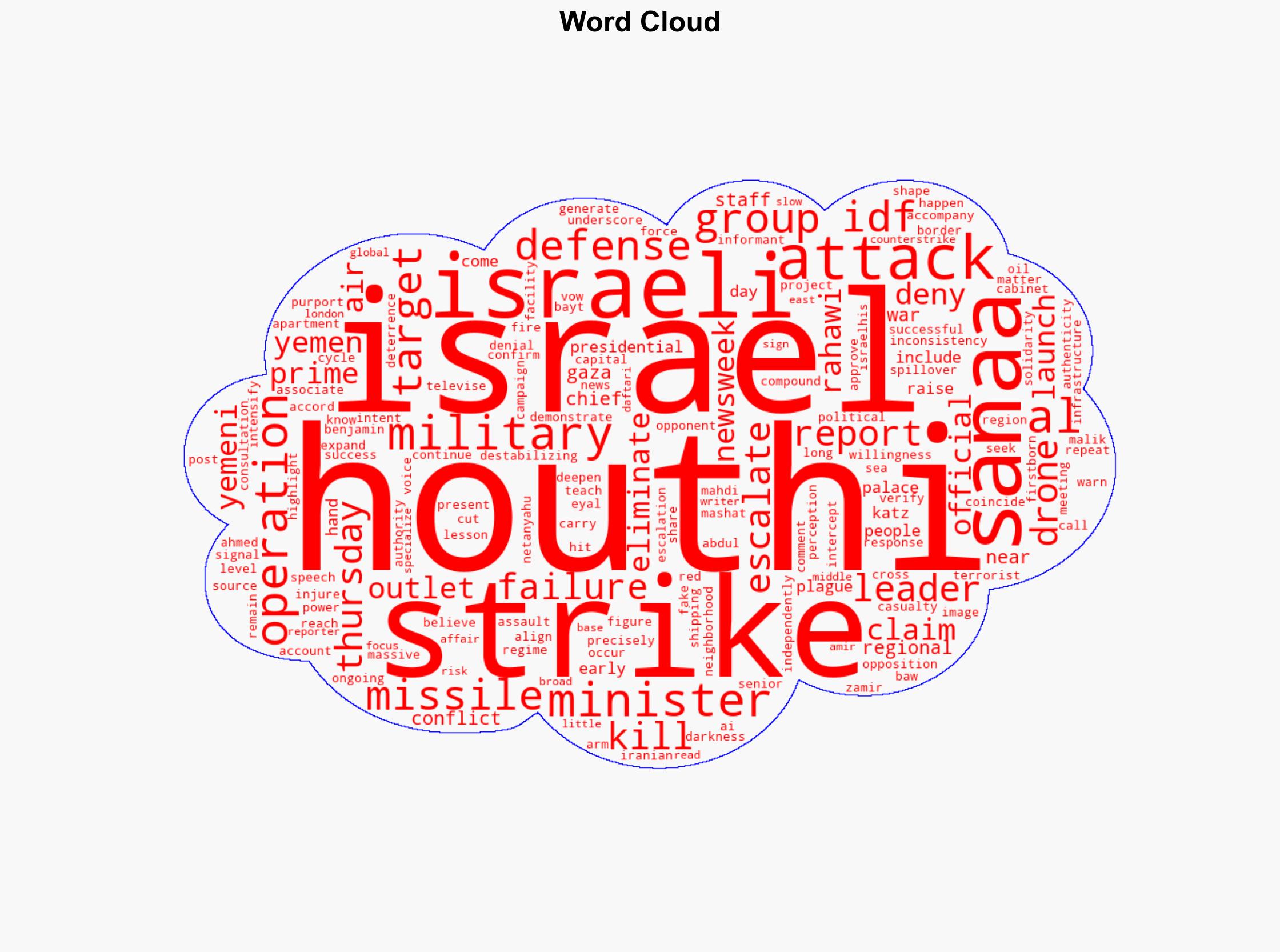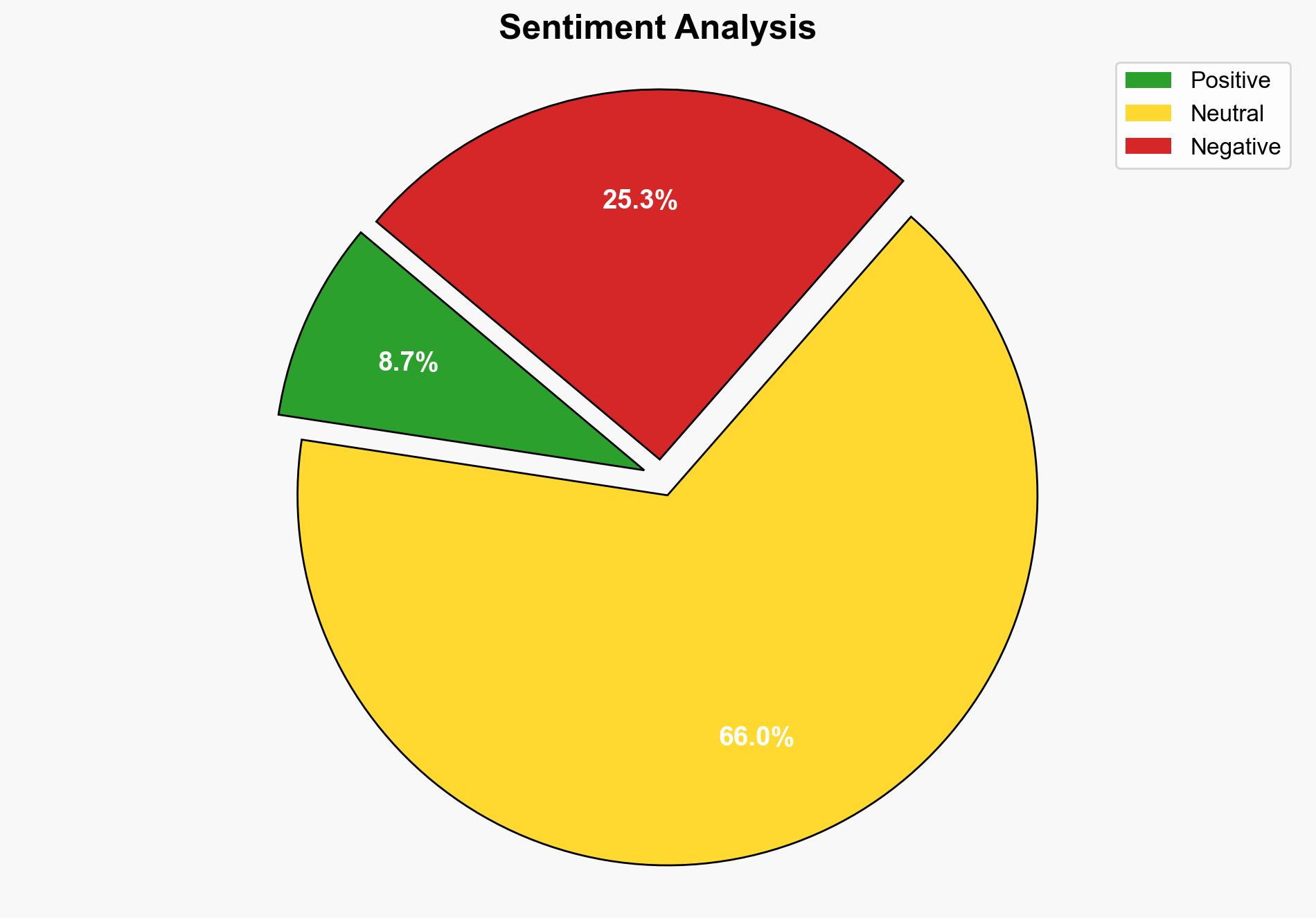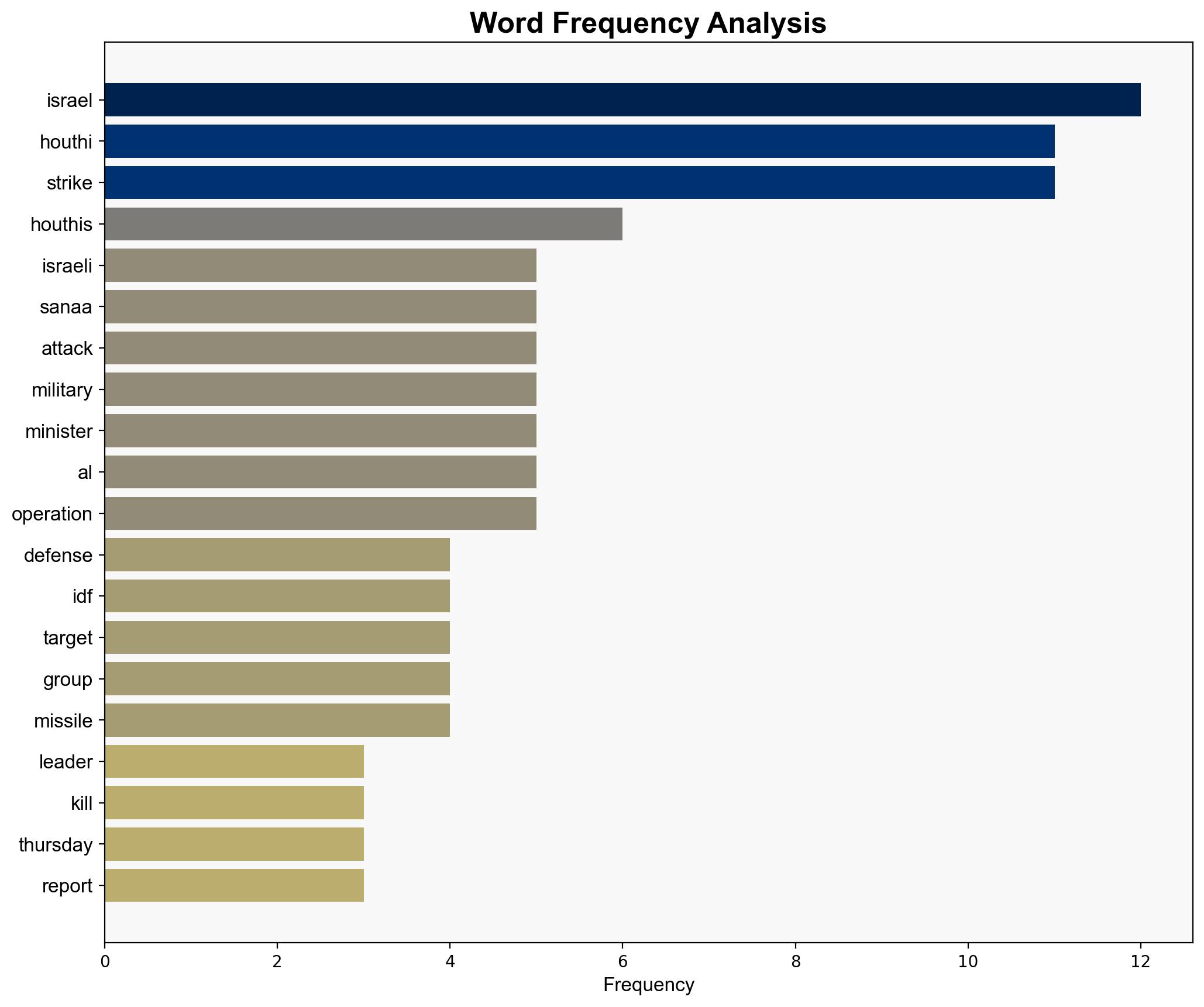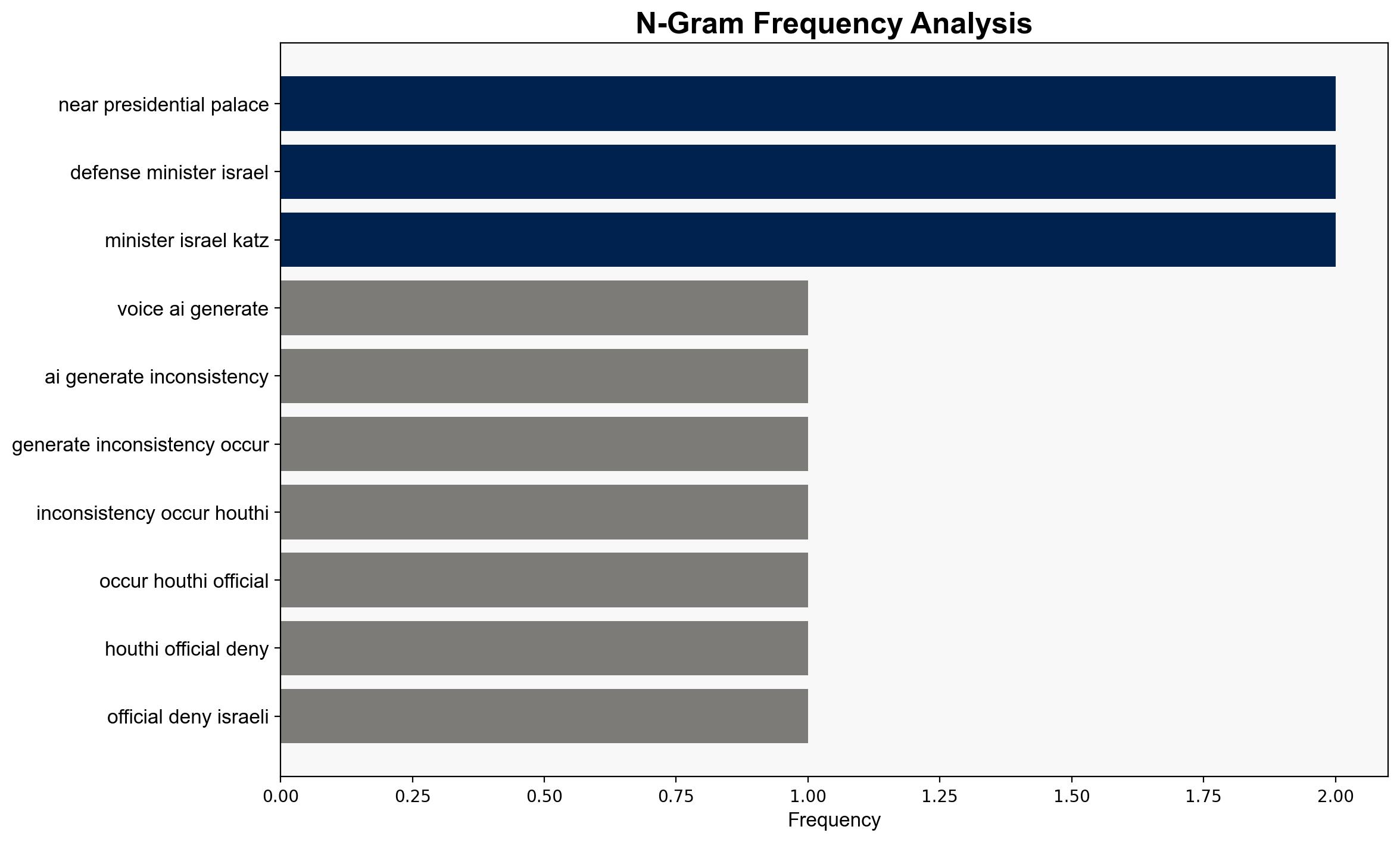Houthi Leaders Targeted in Massive Airstrike What We Know – Newsweek
Published on: 2025-08-29
Intelligence Report: Houthi Leaders Targeted in Massive Airstrike What We Know – Newsweek
1. BLUF (Bottom Line Up Front)
The most supported hypothesis is that the Israeli airstrike successfully targeted key Houthi leaders in Sanaa, despite Houthi denials. This conclusion is drawn from corroborative reports from Israeli sources and the strategic context of escalating regional tensions. Confidence in this assessment is moderate due to conflicting narratives and unverifiable claims. It is recommended to monitor regional military activities closely and prepare for potential retaliatory actions by Houthi forces or their allies.
2. Competing Hypotheses
Hypothesis 1: The Israeli airstrike successfully targeted and eliminated key Houthi leaders, including Ahmed al Rahawi, as part of a broader strategy to deter Houthi aggression and demonstrate military capability in the region.
Hypothesis 2: The airstrike did not achieve its intended objectives, and Houthi leadership remains intact. The reports of successful targeting are part of a psychological operation to project strength and deter further Houthi attacks.
Using the Analysis of Competing Hypotheses (ACH) 2.0, Hypothesis 1 is better supported by the alignment of Israeli military statements and the strategic context of ongoing Houthi missile and drone attacks on Israel. Hypothesis 2 is weakened by the lack of independent verification of Houthi claims and the historical pattern of denial in similar contexts.
3. Key Assumptions and Red Flags
– Assumption: Israeli sources are accurately reporting the outcomes of the airstrike.
– Red Flag: Houthi denials and claims of “fake news” could indicate an attempt to maintain internal morale and external support.
– Blind Spot: Lack of independent verification of casualty reports and the potential for misinformation from both sides.
4. Implications and Strategic Risks
The escalation of hostilities between Israel and Houthi forces increases the risk of a broader regional conflict, potentially involving Iranian-backed groups. The continuation of missile and drone attacks could disrupt Red Sea shipping lanes, impacting global trade. Additionally, the psychological impact of perceived Israeli military successes or failures could influence regional alliances and support.
5. Recommendations and Outlook
- Enhance intelligence gathering on Houthi leadership movements and communications to verify claims.
- Strengthen regional defense systems to counter potential retaliatory attacks.
- Engage in diplomatic efforts to de-escalate tensions and prevent further regional destabilization.
- Scenario Projections:
- Best Case: Successful deterrence leads to a reduction in Houthi attacks and stabilization of the region.
- Worst Case: Escalation into a broader conflict involving multiple regional actors.
- Most Likely: Continued cycle of strikes and counterstrikes with intermittent diplomatic interventions.
6. Key Individuals and Entities
– Ahmed al Rahawi
– Abdul Malik al Houthi
– Mahdi al Mashat
– Benjamin Netanyahu
– Eyal Zamir
– Israel Katz
7. Thematic Tags
national security threats, regional conflict, counter-terrorism, Middle East tensions





